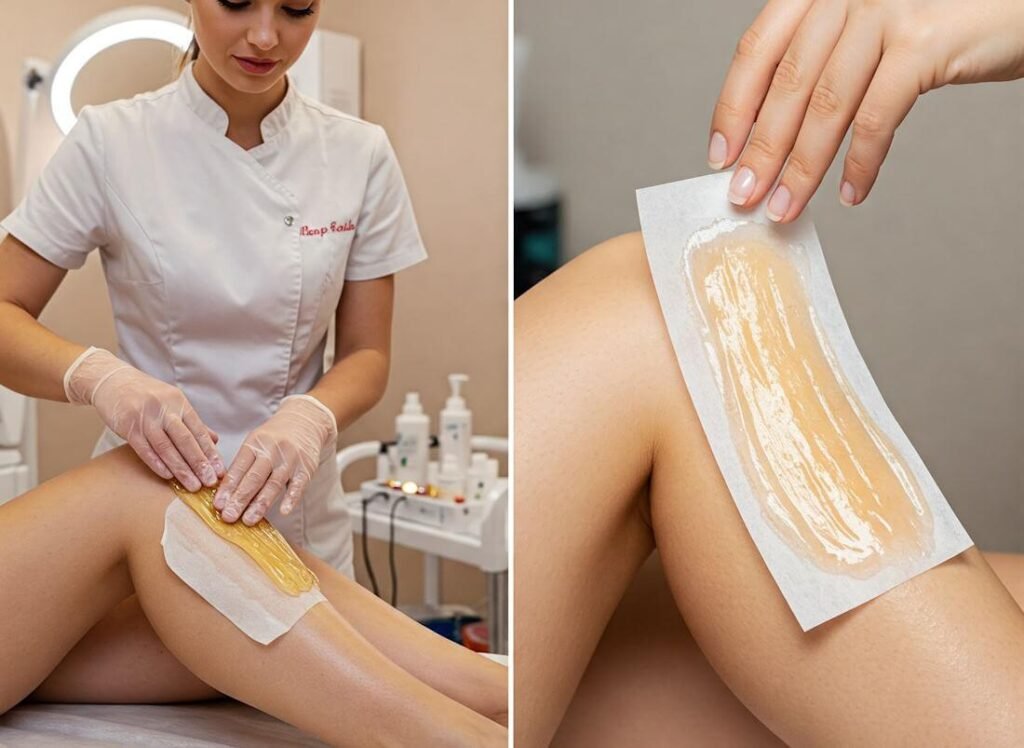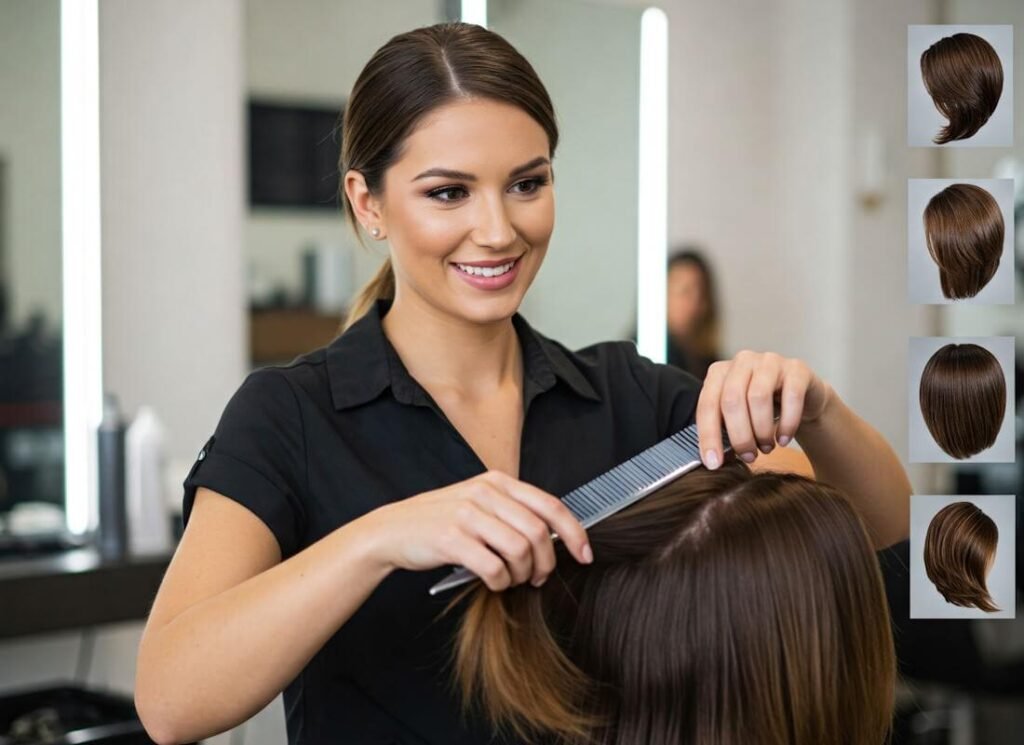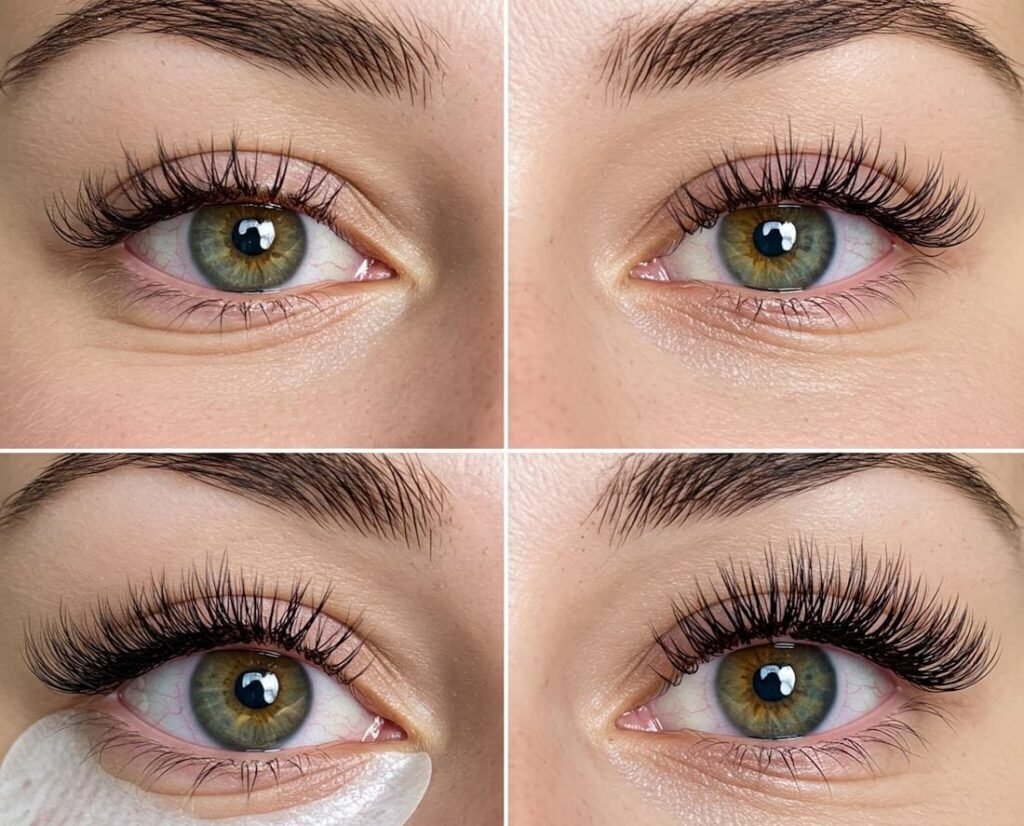Waxing is a widely recognized method of hair removal that has been utilized for centuries, dating back to ancient civilizations such as the Egyptians and Greeks. It involves applying a sticky substance, typically wax, to the skin and then pulling it away quickly to remove unwanted hair from the root. This method not only leads to smoother skin but also prolongs the time before hair regrowth, making it a popular choice among individuals seeking an effective hair removal solution.
There are several types of wax used for this process, each catering to different skin sensitivities and hair types. Hard wax, for instance, is ideal for sensitive areas such as the underarms and bikini line, as it hardens and wraps around the hair, allowing for gentle removal without adhering too much to the skin. Soft wax, on the other hand, is often used for larger areas of the body, like the legs and arms, and is removed with a cloth strip. The selection of wax type can significantly impact the overall waxing experience, including pain levels and results.
In terms of application, waxing can be performed on almost any part of the body, with common areas including the legs, arms, back, chest, and facial regions. Each area requires different techniques and wax types to ensure safety and effectiveness. Professional waxing services often leverage the expertise of trained estheticians who can assess the client’s skin type and hair growth patterns, tailoring the treatment accordingly for optimal results.
With its historical significance and diverse applications, waxing continues to be a preferred method of hair removal, merging efficiency with lasting effects. As more individuals explore their options, understanding the principles and varieties of waxing becomes essential for making informed decisions in personal grooming.
The Appeal of DIY Waxing
In recent years, DIY waxing has surged in popularity among individuals seeking an alternative to professional waxing services. This trend can be attributed to various factors, prominently convenience, cost-effectiveness, and the inherent privacy it offers. For many, waxing at home allows for greater control over the scheduling and frequency of hair removal, eliminating the need to arrange appointments around busy personal or professional lives.
Cost-effectiveness is another significant motivator for those opting for DIY waxing. Professional waxing sessions can be relatively expensive, leading individuals to seek out budget-friendly alternatives that still provide satisfactory results. DIY waxing kits are widely available in stores and online, often featuring a range of products to suit different skin types and hair textures. This accessibility can empower individuals to achieve hair removal when needed without the continuous expense of a salon visit.
Privacy is yet another compelling advantage for many considering DIY techniques. Some people may feel uncomfortable with the idea of undergoing waxing procedures in front of others, opting instead for the familiar surroundings of their homes. The act of waxing in a private space can alleviate anxiety and promote a more relaxed atmosphere, allowing individuals to take their time and perfect their technique without feeling rushed.
However, while the appeal of DIY waxing is undeniable, there are potential downsides to consider. Improper technique can lead to adverse skin reactions, uneven results, or even injury. Additionally, the efficiency and effectiveness of DIY methods can vary significantly depending on the individual’s skills and adherence to product instructions. As such, although the conveniences of DIY waxing are substantial, one must weigh these benefits against the risks involved.
Advantages of Professional Waxing
Seeking professional waxing services presents a myriad of benefits that contribute to both the effectiveness of the hair removal process and the overall experience. One primary advantage is the expertise of trained aestheticians. These professionals possess specialized knowledge and skills acquired through extensive training, allowing them to perform waxing techniques with precision and care. Their ability to assess skin types and hair textures ensures that the waxing method chosen is suitable for the individual, reducing the risk of adverse reactions.
Furthermore, the quality of products used in professional environments significantly exceeds that of typical at-home waxing kits. Salons often utilize high-quality waxes specifically formulated to cater to various skin sensitivities. This is essential as superior waxing products provide better adhesion to hair while minimizing discomfort. The result is a more effective hair removal process that can lead to smoother skin for a longer duration compared to DIY approaches.
Another vital aspect of professional waxing is the sanitary conditions maintained in reputable salons. Licensed establishments adhere to strict hygiene protocols, using sterilized equipment and single-use items to prevent any risk of infection. This attention to cleanliness not only enhances the safety of the waxing procedure but also ensures a more pleasant experience for clients. In contrast, DIY waxing can expose individuals to increased risk factors such as contamination through improper sanitation practices or incorrectly prepped surfaces.
Additionally, the calming atmosphere of a professional salon can significantly enhance the overall experience. Clients can relax, knowing they are in a safe and soothing environment, making the hair removal process less intimidating and more enjoyable. Overall, the combination of trained expertise, superior products, and a sanitized, comfortable setting establishes professional waxing as a highly effective option for those seeking hair removal solutions.
Safety and Hygiene Concerns
When considering waxing, whether professional or DIY, safety and hygiene are paramount. The skin is a sensitive organ, and improper techniques or unsanitary conditions can result in a range of complications. DIY waxing often lacks the precision and care that professional salons provide. One common risk of at-home waxing is the potential for burns. Many DIY kits involve heated wax, and without proper temperature control, it can become too hot, leading to painful burns that may require medical attention.
Furthermore, skin irritation is another significant concern associated with DIY waxing. Many individuals may not be fully aware of their skin type or may choose products that are unsuitable for them. This could lead to allergic reactions, rashes, or exacerbation of existing skin conditions. In professional settings, trained aestheticians assess the client’s skin condition and select appropriate products, thereby minimizing the risk of irritation or adverse reactions.
Another important aspect of safety and hygiene in waxing is cleanliness. Salons are required to adhere to strict sanitation protocols, ensuring that all tools and equipment are properly cleaned and sterilized between clients. This reduces the risk of infections significantly, a concern that is often overlooked in a home-setting where hygiene practices may not be as rigorous. Additionally, professionals are adept at identifying any contraindications, such as the presence of open wounds or active skin conditions, which can complicate the waxing process.
In conclusion, while DIY waxing may appear convenient and cost-effective, it carries inherent risks that can compromise safety and hygiene. Seeking professional waxing services ensures that the procedure is performed in a sterile environment with trained personnel, significantly reducing the likelihood of burns and skin irritation, and fostering a safer, more effective waxing experience overall.
Cost Comparison: DIY vs. Professional
When evaluating the costs associated with waxing, a clear distinction arises between the DIY approach and professional services. Initially, the appeal of DIY waxing is often associated with lower upfront costs. The price for a basic waxing kit can range from $10 to $50, depending on the quality and quantity of the products included. This includes items such as wax, spatulas, and strips, making it a straightforward option for those looking to save money. However, it is essential to consider that this initial investment may not encapsulate the total expense over time.
On the other hand, professional waxing services come with a higher price tag, typically ranging from $30 to $100 per session. The costs can vary based on geographical location, the technician’s expertise, and the specific area being serviced. For individuals opting for regular waxing sessions, the cumulative expenses can be substantial. Nonetheless, it is important to recognize that professional services often deliver consistent results, minimizing risks of skin irritation or improper application, which are more common in DIY attempts.
Furthermore, factoring in long-term costs reveals nuanced insights. DIY waxing can lead to issues like recurring purchases of products, potential skin reactions necessitating treatments, or subpar results that might require professional correction. Meanwhile, regular clients of wax specialists benefit from loyalty discounts and packages that can reduce costs over time. In light of these points, individuals must weigh the immediate financial outlay against long-term implications when considering waxing options.
In conclusion, while DIY waxing presents an appealing initial savings opportunity, the evaluations of long-term costs and potential risks associated with self-application may necessitate a reconsideration of long-term value and financial implications of professional waxing services.
Pain Levels and Experience
When considering hair removal methods, pain levels are a significant concern for many individuals. Waxing, whether performed professionally or through a DIY approach, can elicit discomfort, but the intensity of that pain often varies considerably. Understanding these differences is crucial for making an informed decision about which method to choose. Generally, professional waxing tends to result in less perceived pain compared to DIY waxing, primarily due to the expertise and experience of trained estheticians.
One of the key factors contributing to the reduced discomfort in professional waxing is the technique employed by experts. Professional estheticians are well-versed in the most effective application and removal of wax, allowing them to minimize pulling and irritation. Additionally, professionals often use high-quality waxes specifically designed to reduce pain during the process. They are trained to apply wax at the right temperature, ensuring it adheres properly to the hair without damaging the skin, which is a common issue with less experienced DIY efforts.
Moreover, professionals are better equipped to manage the waxing experience to further minimize discomfort. Many utilize various strategies to distract clients during the procedure, such as engaging in conversation or providing soothing music. This not only makes the experience more pleasant but may also help to reduce the focus on the pain associated with waxing. In contrast, a DIY session may lack these supportive elements, potentially leading to a more painful experience due to anxiety or uncertainty about the process.
In essence, while both professional and DIY waxing provide effective hair removal, the level of pain experienced can differ significantly. The skill and knowledge of professional estheticians often lead to a more comfortable waxing experience, making it a preferable option for individuals concerned about pain levels during hair removal.
Variety of Services Offered by Professionals
When considering hair removal options, the range of waxing services available through professionals substantially exceeds what one can typically achieve through do-it-yourself methods. Professional waxing establishments often provide a diverse menu of services tailored to meet various individual needs and preferences. Among these offerings, Brazilian waxing stands out as a specialized service aimed at those seeking a more thorough hair removal experience in the bikini area. This technique requires specific expertise to ensure effective and safe results, something that DIY efforts may struggle to replicate.
Furthermore, professional waxing services often utilize a variety of wax types, including hard wax, soft wax, and organic wax options. Hard wax adheres to the hair rather than the skin, allowing for gentler removal, making it a preferred choice for sensitive areas. In contrast, soft wax, which is applied with a cloth strip, is effective for larger body areas and offers speedy hair removal. Organic wax aligns with the growing trend towards natural beauty products, appealing to clients who prioritize sustainability and skin-friendly ingredients. This wide array of choices allows customers to select the waxing method that best suits their personal comfort levels and skin types.
Additionally, skilled technicians employ various techniques tailored to the unique contours of the body, optimizing both efficiency and comfort during the waxing process. Professionals are trained to navigate sensitive areas and intricate body shapes, ensuring a thorough treatment that DIY methods may inadequately provide. By relying on the expertise of trained specialists, clients can not only enjoy personalized treatment but also benefit from safer practices that minimize the risk of skin irritation or improper hair removal. Ultimately, the variety of professional waxing services available empowers individuals to make informed decisions about their hair removal options, enhancing their overall experience.
Post-Waxing Care: Professional Tips vs. DIY Advice
After a waxing treatment, the proper care of the skin is essential to minimize irritation and maintain smoothness. Professional estheticians typically offer advice that is tailored to individual skin types and specific waxing areas. One of the primary recommendations is to avoid direct sunlight for at least 24 hours following a waxing session. This precaution is crucial, as freshly waxed skin can be particularly sensitive and prone to sunburn. Additionally, professionals advise against engaging in rigorous exercise immediately after waxing, as sweat can aggravate exposed follicles and lead to discomfort.
Another common professional tip includes the use of specific soothing products, such as aloe vera gel or chamomile-infused lotions. These products can help calm any redness or inflammation that might occur immediately after the treatment. Furthermore, it’s recommended to avoid any fragrances or harsh chemicals in skincare products for at least a few days. This gentle approach allows the skin time to heal and minimizes the risk of developing ingrown hairs or irritations.
On the other hand, many people who choose to follow DIY post-waxing care often rely on general advice passed down through personal experiences. Common DIY tips include applying ice packs or cold compresses to reduce swelling and redness. While these methods may offer temporary relief, they may not be as effective as professional products specifically designed for post-waxing care. Additionally, DIY enthusiasts may overlook the importance of hydration, which is critical for maintaining skin elasticity and preventing dryness. Applying a simple moisturizer may be a good idea, but it should not contain harmful additives that could provoke a reaction.
Ultimately, while DIY tips can be helpful, adhering to advice from professionals can provide more effective methods for post-waxing care. By understanding various approaches, individuals can select the best practices suited for their skin type and experiences.
Conclusion: Making the Right Choice for You
In considering the benefits of professional waxing versus DIY methods, it is essential to evaluate several factors that can influence your decision. Professional waxing offers several advantages, including the expertise of trained estheticians who ensure a thorough and effective hair removal process. These professionals use high-quality products and techniques tailored to different skin types, minimizing the risk of irritation and ingrown hairs. Furthermore, the environment of a salon is designed to provide a comfortable experience, as estheticians can guide you through what to expect during the procedure.
On the other hand, DIY waxing presents a cost-effective alternative that is appealing to many individuals. Performing waxing at home can be more convenient and time-efficient, allowing you to manage your beauty routines according to your schedule. Additionally, many individuals find satisfaction in mastering the technique themselves, creating a sense of empowerment. However, it is important to acknowledge some potential drawbacks of DIY methods, such as the risk of improper application leading to skin damage or less effective hair removal.
Ultimately, the choice between professional waxing and DIY techniques should be tailored to your personal circumstances. Consider factors such as your budget, time availability, pain tolerance, and skin sensitivity. For individuals with sensitive skin or specific hair removal needs, consulting a professional may be more beneficial. Conversely, if you are confident in your abilities and prefer a budget-friendly approach, DIY waxing can be a viable option. Careful consideration will enable you to select the method that aligns with your preferences and lifestyle, ensuring that your hair removal journey is both effective and comfortable.





